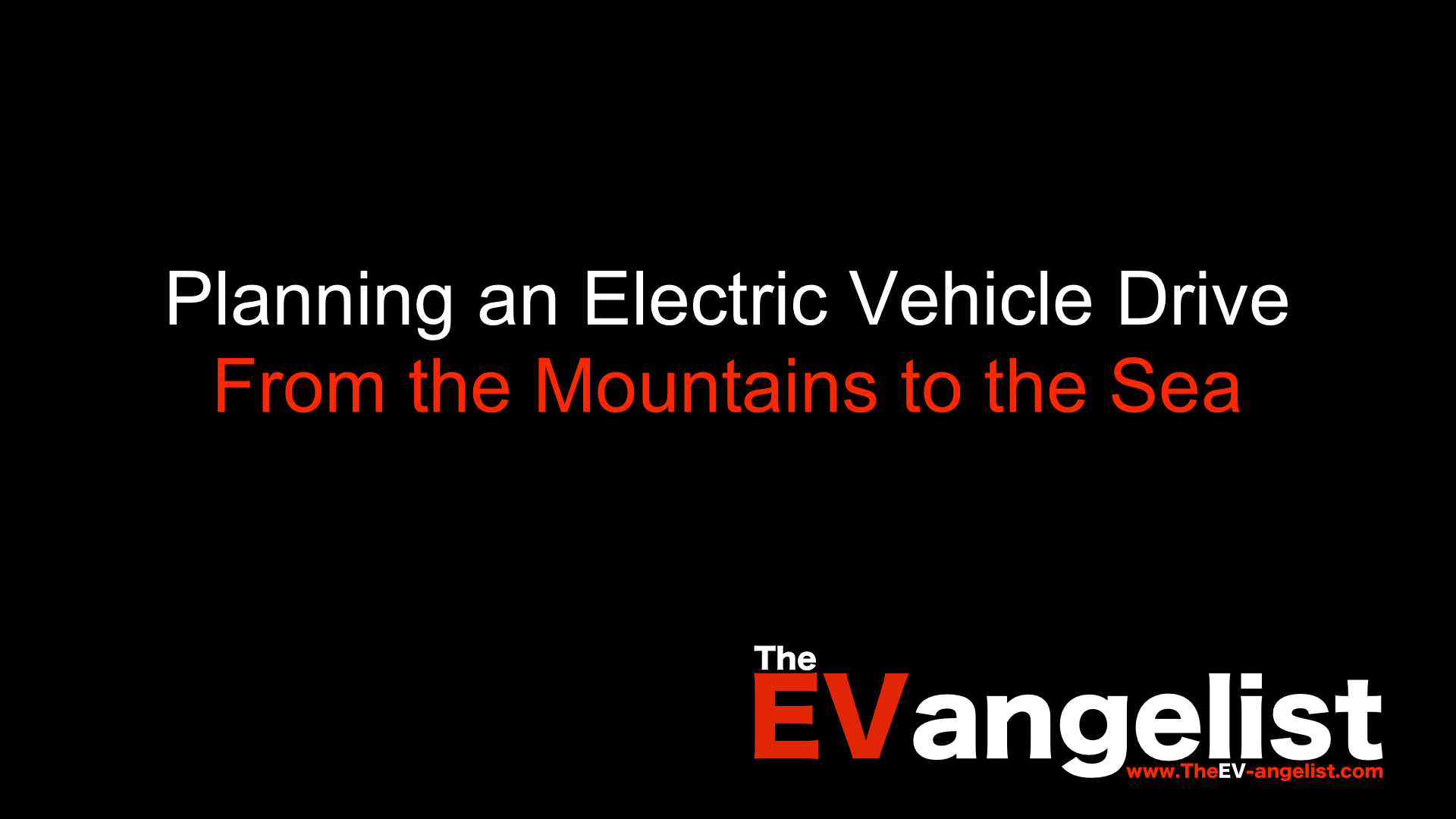I’ve done a few “long distance” trips, in an EV, just to show it’s no big deal, as long as you know where the chargers are and how to maximize your range.
I am now planning a real long distance trip, one of over 3,300 miles. Since I write about this stuff, I feel I cannot allow the trip to be a failure. I cannot allow our EV to be towed by running it out of electricity. Of course, all EV drivers want to prevent being stranded and towed, but I have the added concern of my exploits being used against EVs.
So what do I do?
I prepare, like all EV drivers, but I may carry it a step further. I don’t avoid challenging roads that are lacking in charging infrastructure. I actually seek them out, so that success actually means something. So, I hedge my bets. I not only look for all levels of available charging, I look for 240V outlets. I can’t depend on a single source for information. I look at sites, like PlugShare, but I also check individual networks, like EVgo, Chargepoint and Electrify America, to verify off one another. I check elevation changes, on the drive, in 20 to 30 mile increments, to understand where the challenges will be. This allows me to scrutinize those areas, for added peace of mind.
By doing this, it allows me to enjoy the scenery and companionship of the trip, rather than fretting.
We are planning an EV trip, from Denver, Colorado to Olympia, Washington, passing through six state capitals. My copilot will be Ryan Baggett and we’ll have a documentary video crew tailing us the whole way. Leading that team, will be an amazing storyteller, David Pelcyger. Since the trip is confined to the western U.S., we’re hoping to take an electric pickup. Due to this desire, we’re planning to go in September, to allow some of the announced pickups to become available. Should that not come to pass, we’ll try to get a SUV/crossover with a range of 250+ miles. Similar distances have been driven before, but the EVs used have primarily been Teslas, which have a very large DC fast charging network that non-Tesla vehicles cannot access. I want to show that other brands of EVs can do this as well, without a brand-restricted charging network, because charging infrastructure is rolling out right now.
While the vast majority of Americans don’t travel more than 50 miles in a day, lack of charging infrastructure is often cited as a reason for the EV-curious public to hold off on getting one.
I know it’s ridiculous, but it’s true.
I often wonder if the articles/posts I see pushing this argument are authored by ill-informed journalists, who are just echoing articles they’ve read or if a more sinister scenario is being evidenced. Are the forces that do not want EV adoption to occur, publishing these stories, hoping to delay EV adoption or actually cripple the EV industry by getting people to keep postponing adoption and force fledgling manufacturers to go under.
Long story short: I don’t know the answer except in the most egregious cases.
So, back to planning a trip. Here’s a video of part of a trip planning session between Ryan and myself, held over Zoom:

